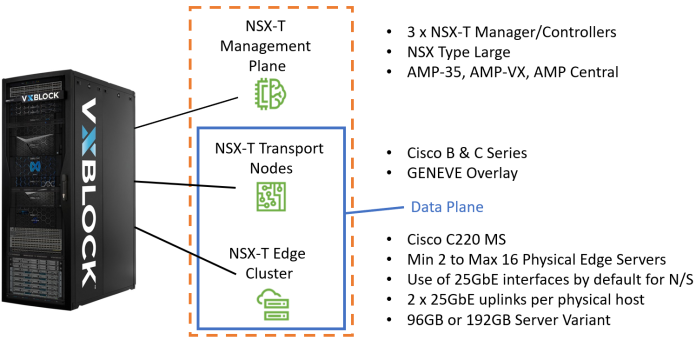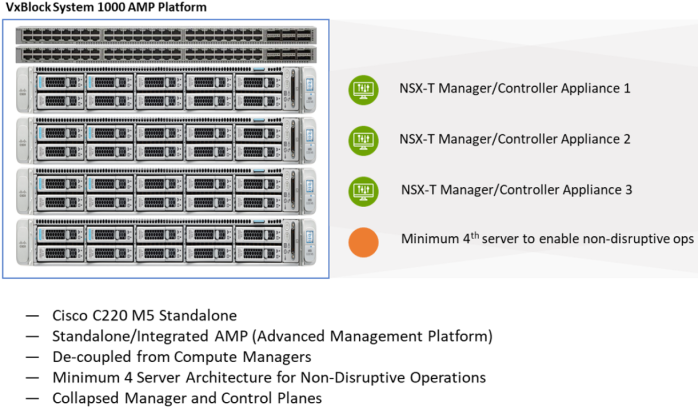Home > Integrated Products > VxBlock 1000 and 3-Tier Platform Reference Architectures > White Papers > Introducing VMware NSX-T into Dell EMC VxBlock 1000 > Management plane
Management plane
-
Unlike NSX-V on VxBlock, there is no interdependence between the NSX-T Manager Appliance cluster and an underlying compute manager, such as VMware vSphere vCenter. This decoupling allows for the NSX-T Manager to interact with multiple compute managers, including multiple instances of vCenter server, cloud-based managers, and container instances by means of a Network Container Plugin (NCP). This engineered flexibility addresses the principle drawback of previous architectures in which the NSX Manager was tightly coupled with vCenter Server. The new architecture employs a systematic approach to addressing the platform heterogeneity concerns outlined previously.

Figure 2. NSX-T – Platform Architecture
Starting with NSX-T release 2.4, the Manager and Controller functions are combined, increasing operational efficiency and reducing the overall footprint and resource overhead on the Advanced Management Platform (AMP). The AMP provides a consolidated management infrastructure to manage multiple VxBlock Systems in a data center. The AMP is comprised of servers, shared storage and uses network connectivity to provide a scalable system management platform.

Figure 3. VxBlock System 1000 AMP
The NSX-T Management and Central Control Plane Cluster has been sized and engineered to be compatible with all currently available VxBlock system AMPs. Currently this includes the AMP-3S and AMP Central offerings.
Each Manager appliance has three distinct roles: a Policy role, a Manager role, and a Controller role. The first two roles are associated with the Management plane and the latter with the Control plane.
